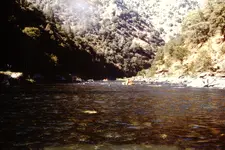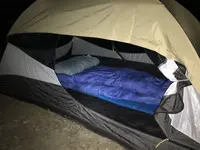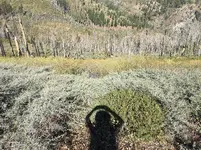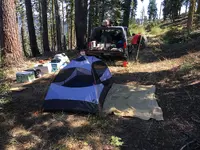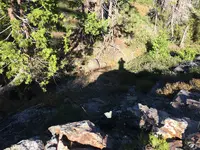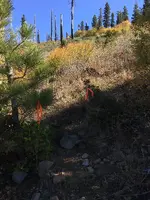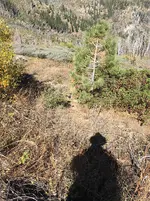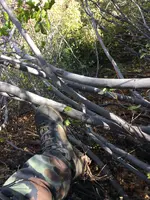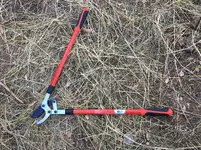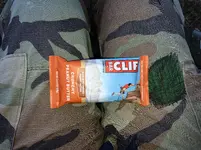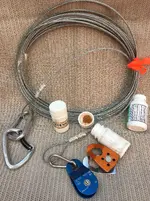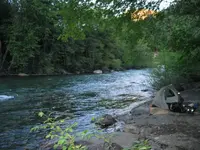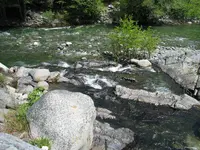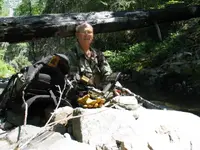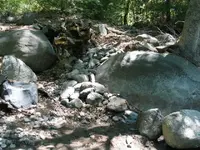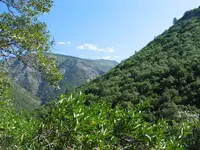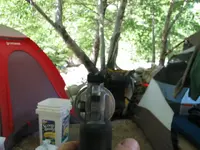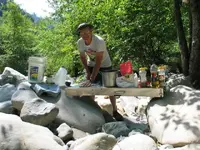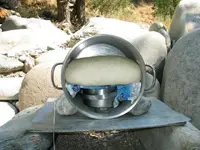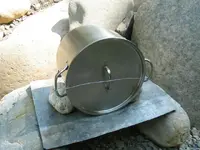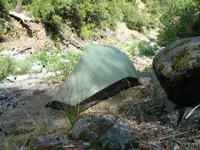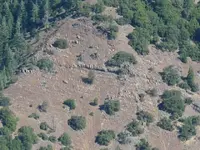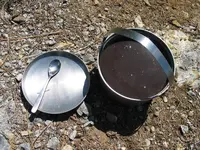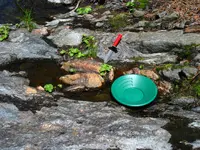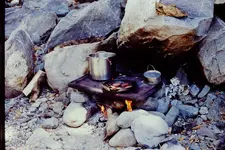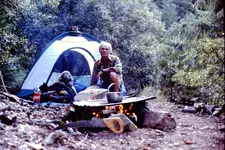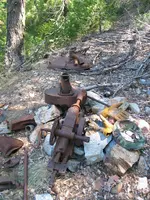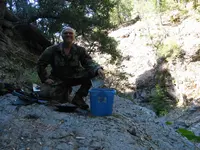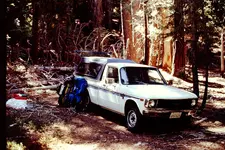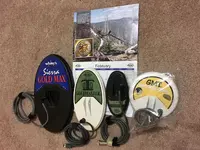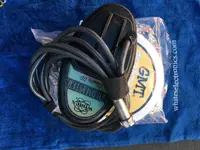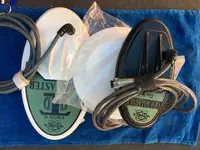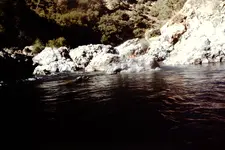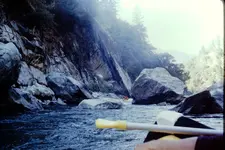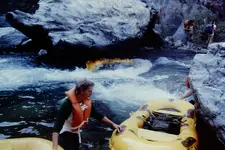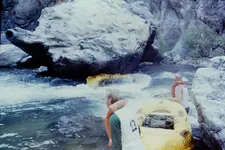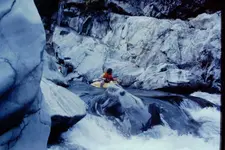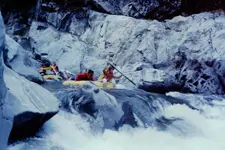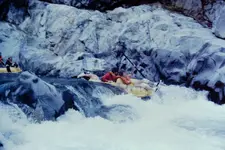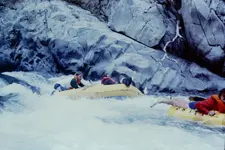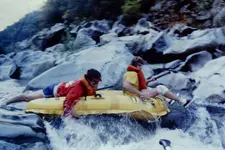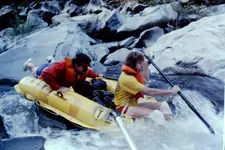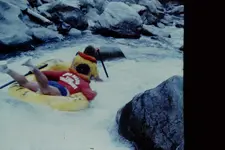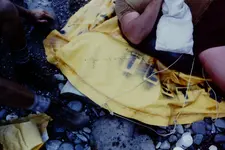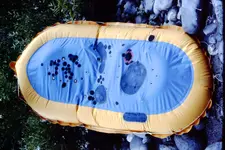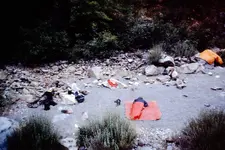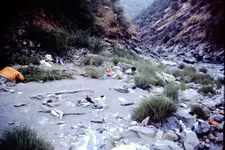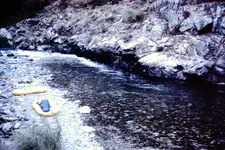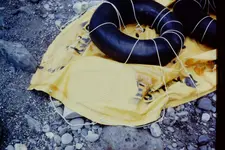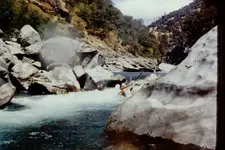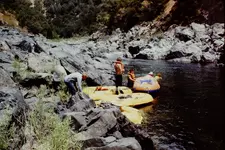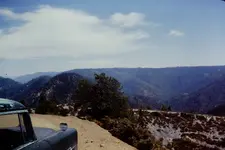RAFTING the NFAR 1973 & 1974
So it seems like today will be the day I add a long series of rafting pictures and comments to share with everyone. The put in point is Euchre Bar Bridge coming in from the Alta side of the canyon. Somehow each member of the group needs to carry their half of the equipment in, in the past I've made wooden back pack frames, added some foam to the wood across the hip, attached straps and waist belt and then each person lashes their gear to the frame and hikes it in. IF The Water is at the proper level (250 cfs max and lower though @ ~ 100 cfs its a lot of portaging and dragging and the Suck Holes are more dangerous (less water w/tighter gaps between the rocks).
Lets back up a little bit - first everyone MUST HAVE dry bags for clothes, sleeping bag & food. If you do not have Real Dry Bags make certain you can bend over and kiss your backside as that will be the last good thing that happens to you on your "Experience"!
NO, rubberized laundry bags are NOT dry bags, pony up the bucks and get the right equipment - trust me on this.
Next, yellow 4 Man Rubber Duckie Rafts will work ONLY IF they are modified. Check out the pictures of the rafts: first pictures in the garage are 1973, the floors have been reinforced with patches, holes punched @ center of patches and brass grommets attached. You will note the ropes that hold the Inner Tubes to the floors AND to the side walls or air bladders, this lashing Stiffens the rafts side to side and front to back which makes them a Little More Maneuverable (w/o the stiffening it is like trying to ride a snake down the river and there is NO steering the raft). ALSO, each raft MUST have its own foot pump for inflating the rafts.
The 1974 modifications to the W.D. raft added 'D' Ring patches to the sides & floors and Grab Handles front and back for the two rafters. So no ropes on the outside of the raft to hang up on rocks, trees or two man crosscut saws! (and yes that did happen one year).
The next bit of right equipment are the paddles. The two piece aluminum paddles that come with the rafts should be left at home. The shafts bend when you really need to Dig into the water to bring the raft around to go nose first down the falls. The blades become sharp from fending off the rocks and will eventually go through the floor or the air bladder (yes this has happened). Wood Canoe paddles would work well. In one picture I will point out the paddles I made: ~ 4' long, unbreakable plastic blades, "T" at the top of each shaft. The Unbreakable Plastic Blades are important as they must not break. Why would they Break? You will be using the paddles to push off of/away from the rocks. Oh, Do Not let your raft bash into rocks as at some point the raft bladder will be punctured (and yes this did happen).
Safety equipment: flotation vest, hat with corks attached, simple helmet (keeps your head safe when your partner gets back into the raft with his paddle in his hand). Golden Rule - always hold onto your paddle! Also, the helmet is good sun shade and can protect your head should you hit a rock (this never happened but it could). I was the only one to ever wear a helmet and I loved it as those paddles hurt when you get clocked in the head with it. Further safety equipment: SUN BLOCK! One year I had blisters on my legs from the sunburn, stupid me!! Everyone needs to be a capable swimmer! Eye Glasses MUST have a type of solid strap to keep them on your head! A good first aid kit needs to be along and no raft leaves the other rafts, stay together.
Warping a Raft = the raft will drive into a wide rock, this causes the contact edge of the raft to slide up the rock and of course the occupants drop out the other side causing that edge to go down into the water. Water weighs 8 lbs per gallon, the surface area of the raft as it is submerged is at a maximum with all that river water pushing it right into the rock Trapping the raft against the rock, warping a raft (rafter jargon). DO NOT get between the raft and the rock as you will DIE!
Ok, so here comes the excitement and fun:

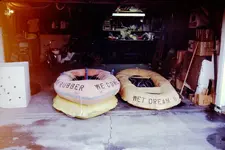
1973 Trip, Rafts have all been modified with patches to the floor (in a circular pattern to trap each car type inner tube), brass grommets and rope tied around the raft bladders and the inner tubes
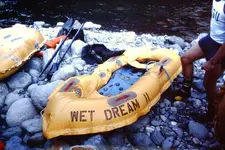
1974 trip, W.D. Raft has had "D" Ring patches (so the ropes are not exposed on the sides and bottom of the raft) and "Grab Handles" front & back added for the two rafters to hold onto! In this picture WD is being inflated via a foot pump. Be good & kind to your foot pump!!
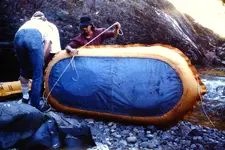
What patches with grommets look like and rope being strung through all those holes, ugh.
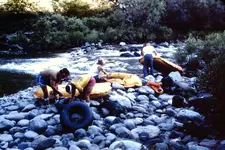
Inner tubes stiffen each raft to make them somewhat maneuverable
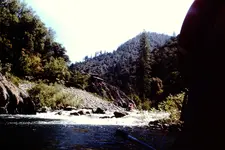
Leaving Euchre Bar and heading into the "S" Curve which is the entrance to the first solid rock gorge on your way down to Green Valley.
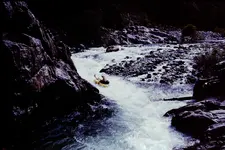
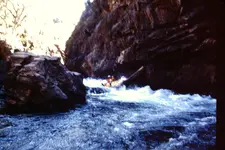
Watch out for the logs
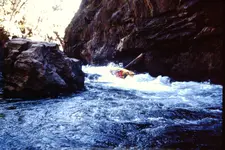
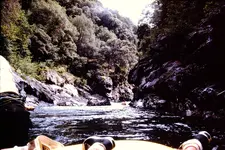
In the background is a raft on its "edge"
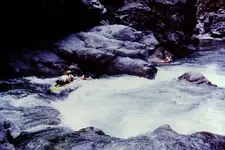
4' Waterfall down in Giant Gap
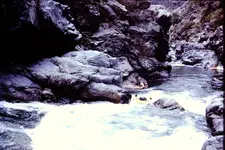
on the other side
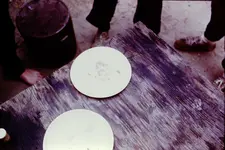
Dredgers showing us their gold at entrance to Pickering Bar
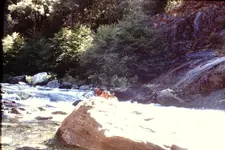
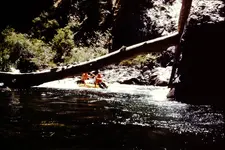
more logs
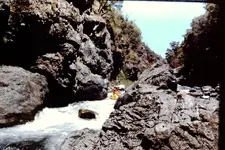
The Slot
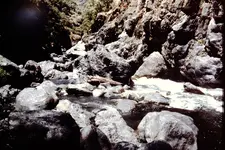
Out of Control:
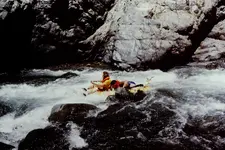
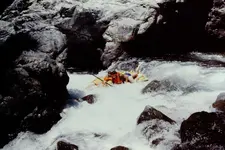

looking back up the slot
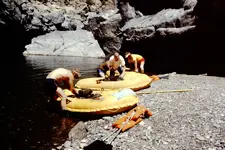
Re-fit & Lunch In the foreground are the two custom raft paddles.

Many rock walls to pass by on this three day trip down to the 2nd Colfax Bridge
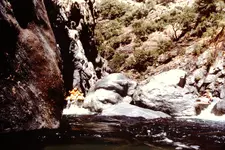
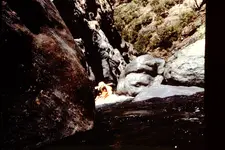
The Physics of sliding on water: the heavy front end goes down, then the back end goes up and then the back end drops. Many times this dumps the front man as well as the back man.
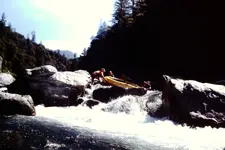
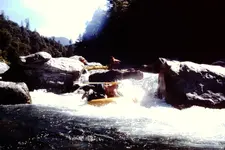
Which way to go around any given obstruction
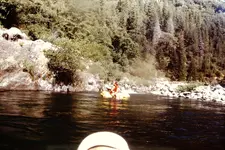
Calm water for a minute or two, maybe

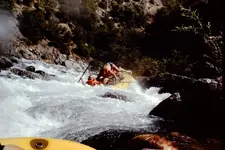
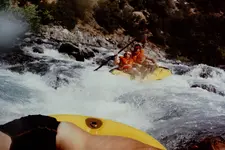
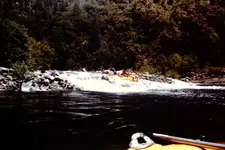
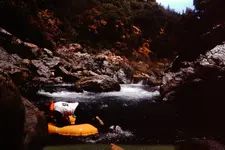
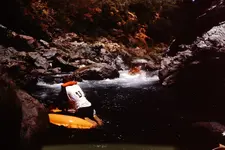
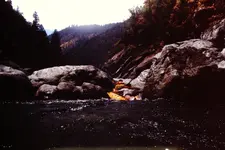
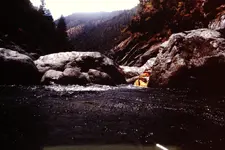
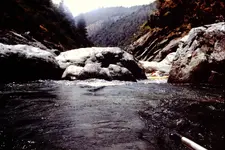
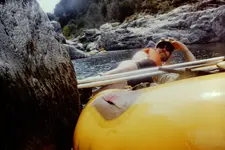
"Scotty" getting out of the way of the picture taking and being "Cool" about it!
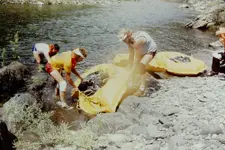
Deflated Ego's
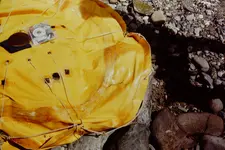
Repair: stitch, 1st coat of rubber cement, patch, G0!
